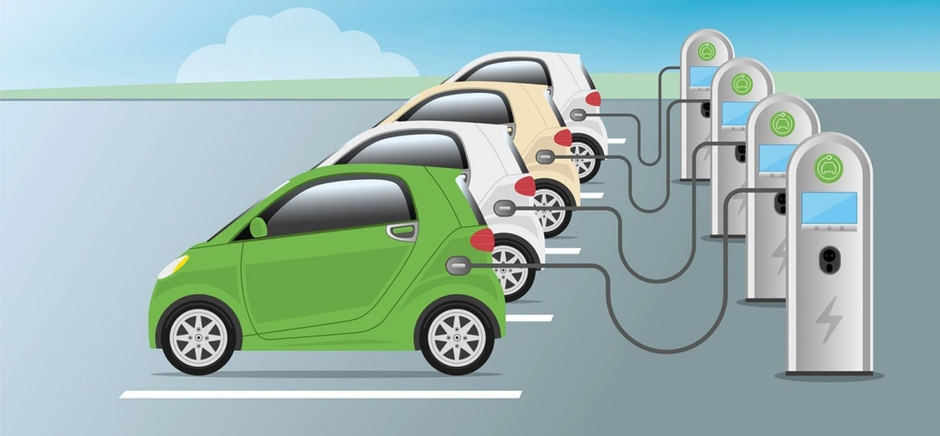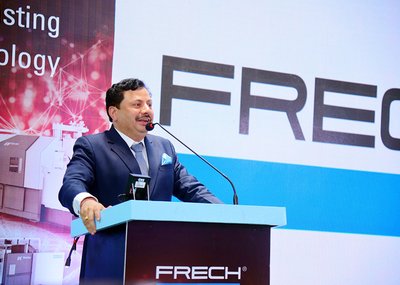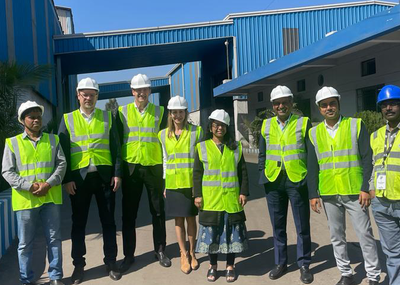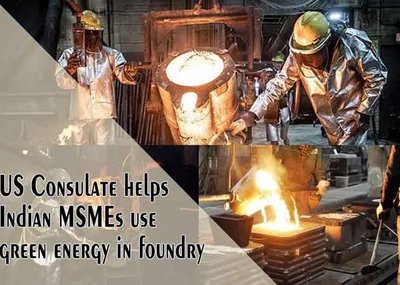By: Bharat Gite, CEO & MD, Taural India
We are currently in the midst of an immediate and accelerating decarbonisation process, which demands our undivided attention. Across the world, there is a renewed emphasis on technological innovations and production protocols that reduce carbon footprints. The rise of electric vehicles is one such surefire innovation that has begun delivering great returns as far as sustainability is concerned, and its yield will only improve henceforth. To truly actualise the next phase of the green revolution, we must reassess our material preferences within the Electric Vehicle (EV) industry. Aluminium, recognised for its eco-friendly attributes, could be the game-changer we need. Adopting aluminium in EV production could yield substantial, enduring benefits, firmly placing aluminium at the forefront of our sustainable future.
The coming of age of aluminium
Aluminium’s utility in the modern age becomes abundantly clear from the exponential rise in its use in the construction, electrification and transportation sectors. The global aluminium market is poised to grow at a healthy pace of 6.1% CAGR to $ 255.91 billion by 2029.
There are many benefits that Aluminium brings to the table. Aluminium dwarfs other metals by a mile when it comes to resisting corrosion. The metal is self-healing, which is to say that it forms a protective oxide barrier when cracked, dented or deformed. It has better in-service dent resistance and can be used without paint or coatings. With aluminium, manufacturers beget greater durability from their output, leading to higher cost savings, lesser maintenance burden and longevity.
The Aluminium Advantage: Fueling the Future of EVs
In 2022, the global steel industry topped an impressive USD 1.27 trillion, solidifying its dominance within the world of metals. However, Aluminium is set to disrupt the status quo. With its numerous advantages, it is steadily carving out its niche in sectors traditionally dominated by steel, including defence, energy, and infrastructure.
As we cast our minds across industries, the EV market emerges as a pivotal area of disruption. Notably, aluminium vastly improves the driving range of BEVs and contributes majorly to mass reduction. When it comes to ensuring the safety of passengers, aluminium trumps steel. In the event of a crash, aluminium absorbs more energy per kilogram than steel and, with its superior crash-crush properties, can withstand multiple blows, such as a rollover.
Additionally, electric vehicles (EVs) perform better with metals that exhibit excellent thermal conductivity, are lightweight and durable, and are well-suited for complex geometric and functional integrations, as well as battery maintenance. All these criteria are naturally fulfilled by aluminium.
Tracing the evolution of Aluminium in the automotive industry, one can’t help but notice its meteoric rise. The use of aluminium in cars has been leaping upwards since the 1970s, when close to 35 kgs of aluminium went into the making of a car, as opposed to the modern-day scenario, where a car has almost 150 kgs of aluminium in it. As mentioned by Frost & Sullivan, the average aluminium content in vehicles is set to surge almost one and a half times to 250 kilograms over the next five years.
There is also a fascinating shift in preferences of the EV manufacturing industry at large. Aluminium castings have become the go-to choice for the EV industry. Aluminium sand casting shines in producing complex parts in commercial EVs. The mega-casting process offers significant advantages, including weight reduction, crucial for enhancing long-range battery technology. As the demand for EVs rises, aluminium castings prove indispensable, delivering durability, complexity, and weight reduction to drive electric mobility forward. The potential surge can be seen from how Volvo has pledged around $1.2 billion in a brand new manufacturing unit in Sweden, which is singularly dedicated to manufacturing electric cars.
Aluminium’s influence in the EV revolution is expansive, reaching beyond the vehicles themselves. The silver metal is playing a significant role in the development of the entire EV ecosystem, including the critical charging infrastructure. Its characteristics make it an ideal choice for manufacturing charging connectors, heat sinks, etc., ensuring efficiency and reliability. Furthermore, Aluminium’s excellent conductivity and corrosion resistance contribute to the overall performance and longevity of the charging infrastructure, which can facilitate the adoption of electric mobility on a larger scale.
A brighter, greener future in the making
Automotive aluminium components have lower carbon emissions than steel and are easier to recycle, suiting a thriving scrap market. Almost 75% of all aluminium produced is still in use today, with over 90% recycling rates in the automotive and construction sectors. A strategic plan could make aluminium a solution for numerous automotive industry challenges. These advancements, however, require collaboration. The path to improved, lasting solutions demands joint efforts among industry stakeholders, which is key to driving industry growth and maximizing EV potential for a sustainable future.
Source: www.financialexpress.com







